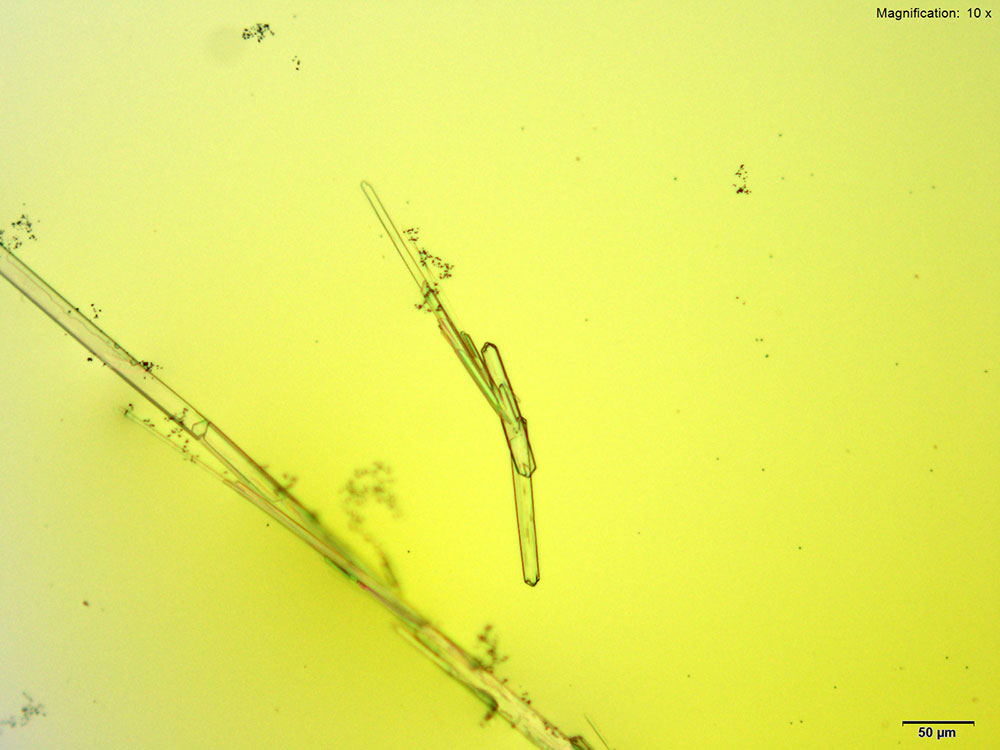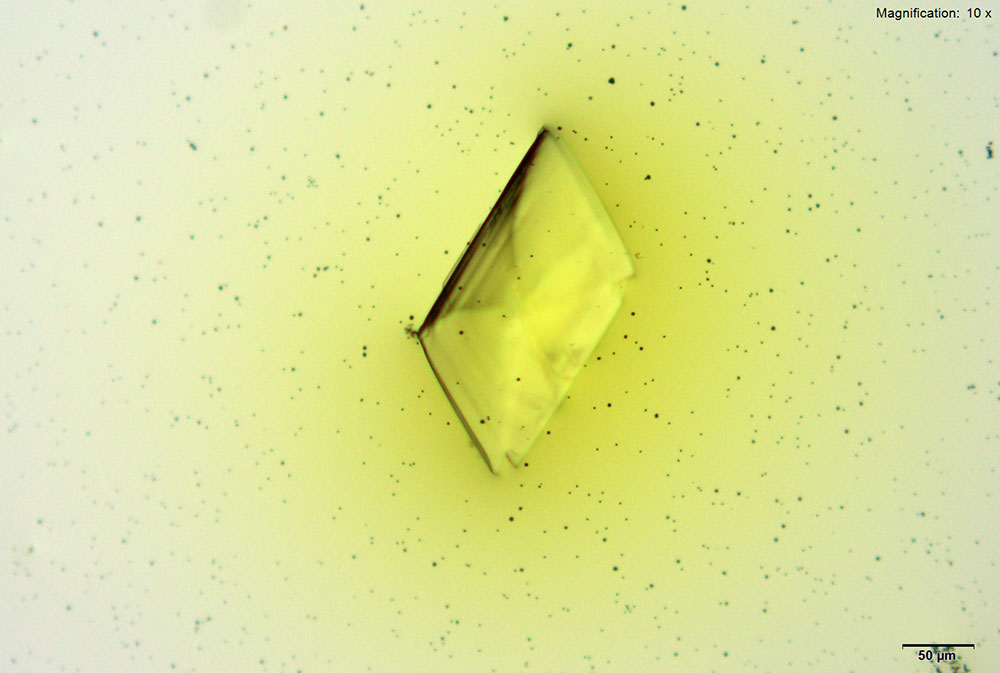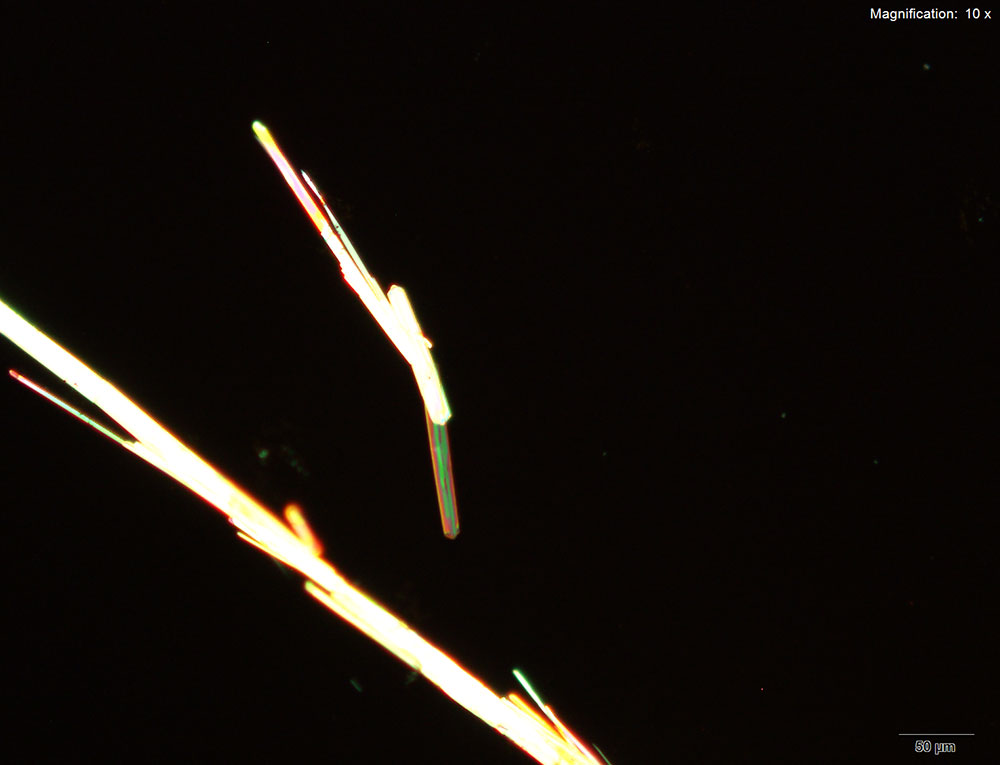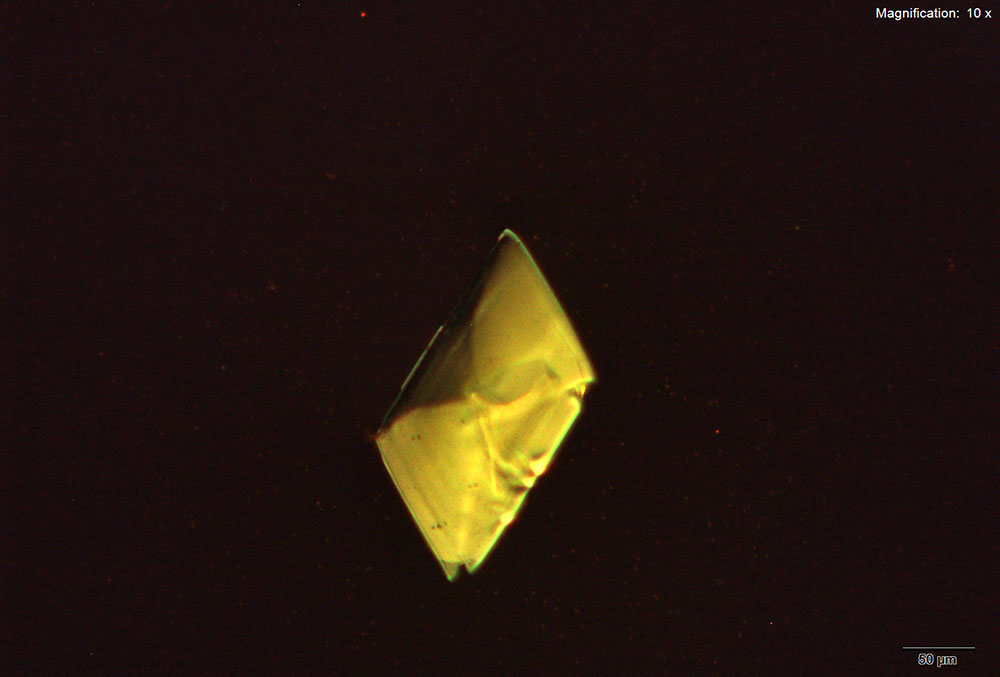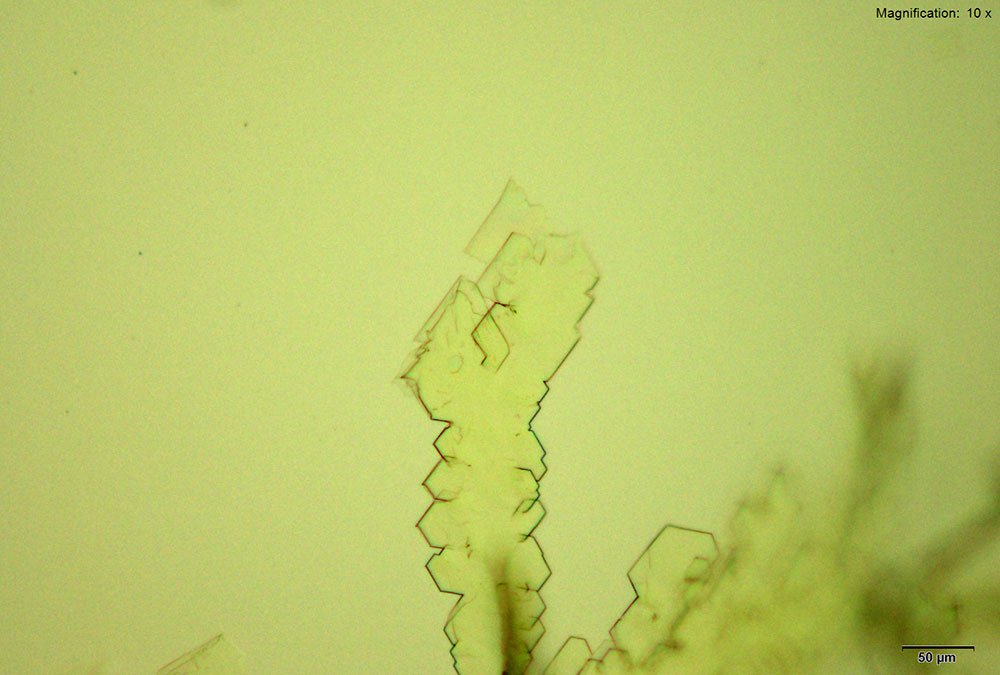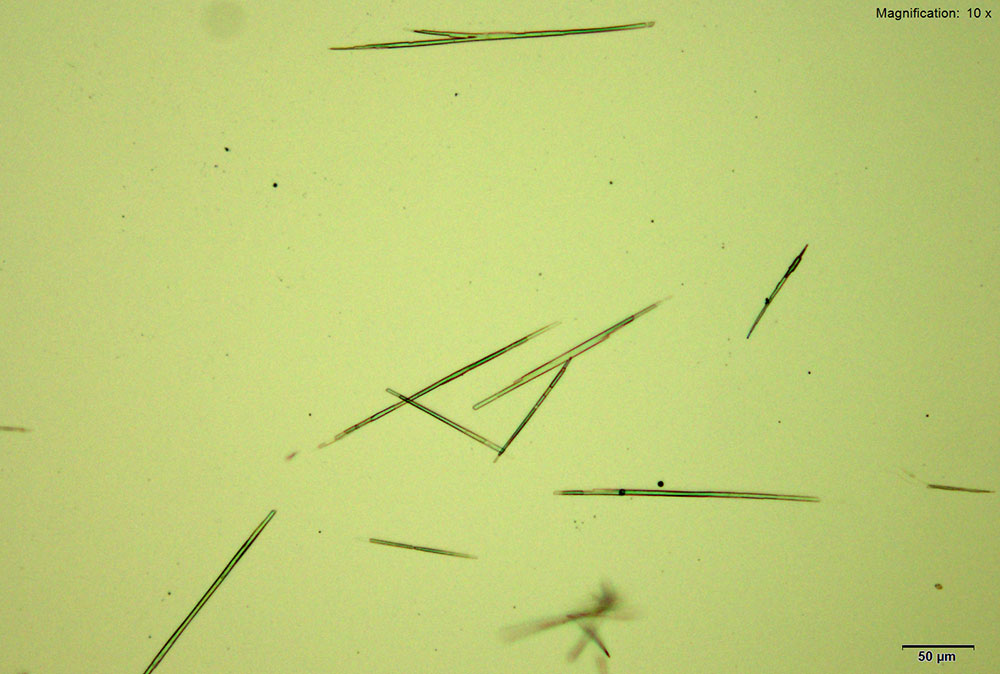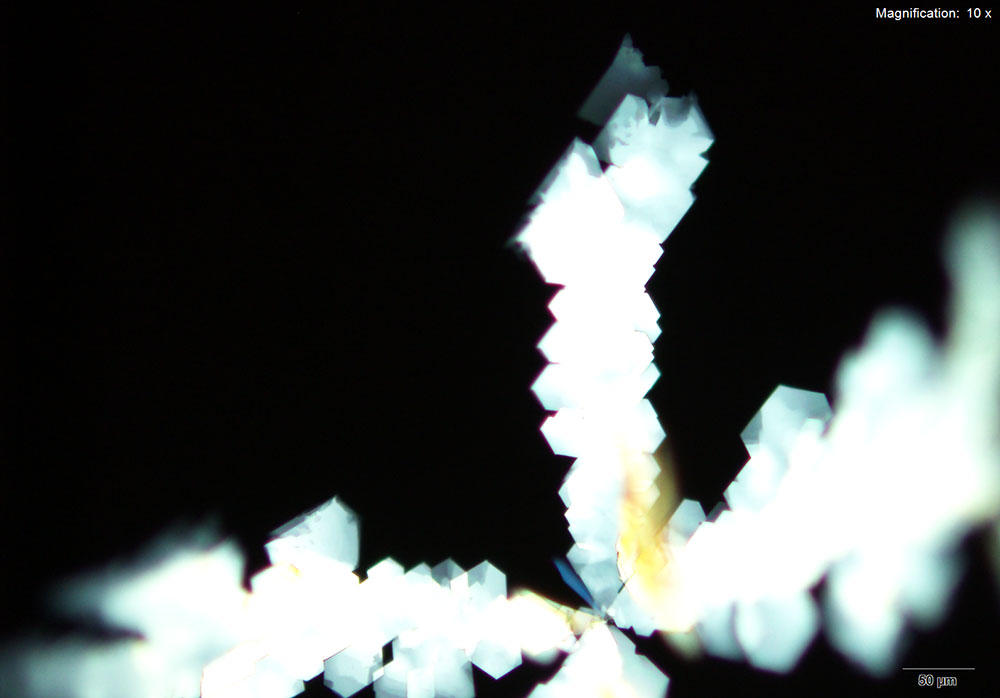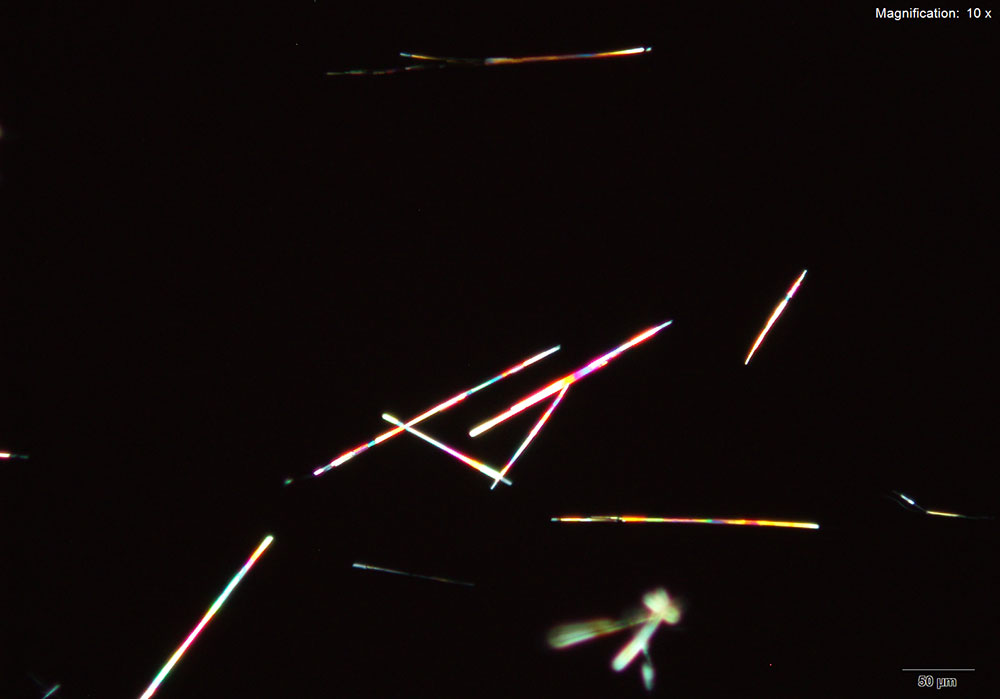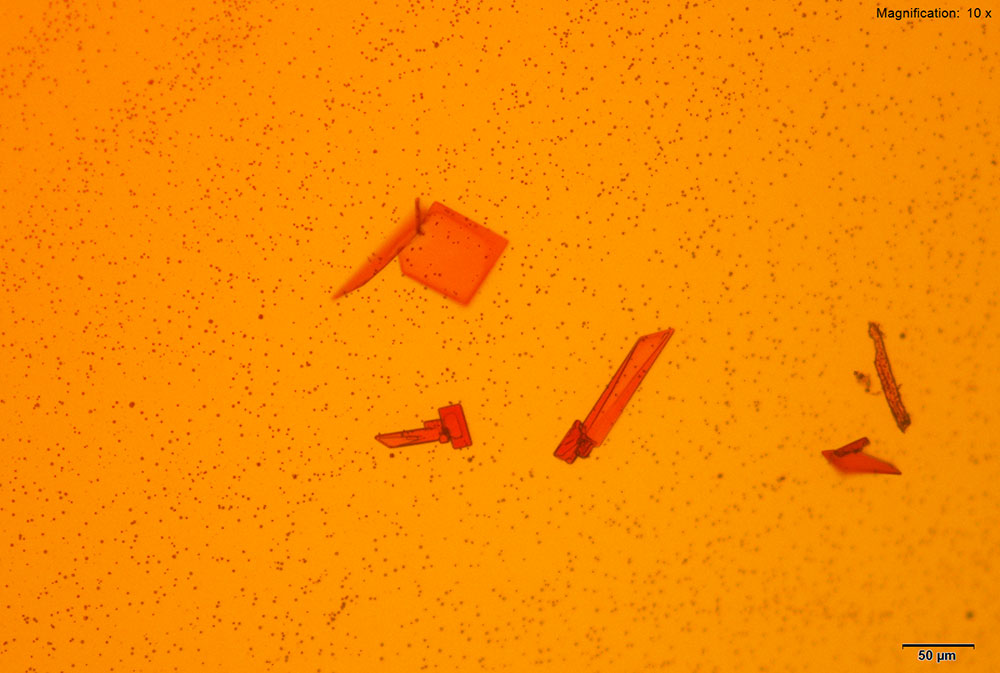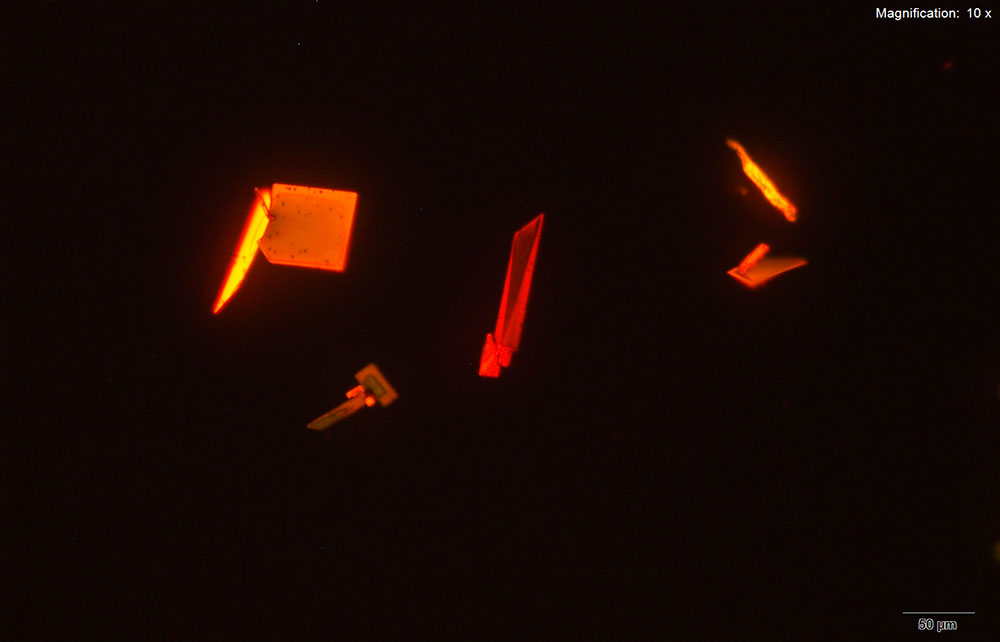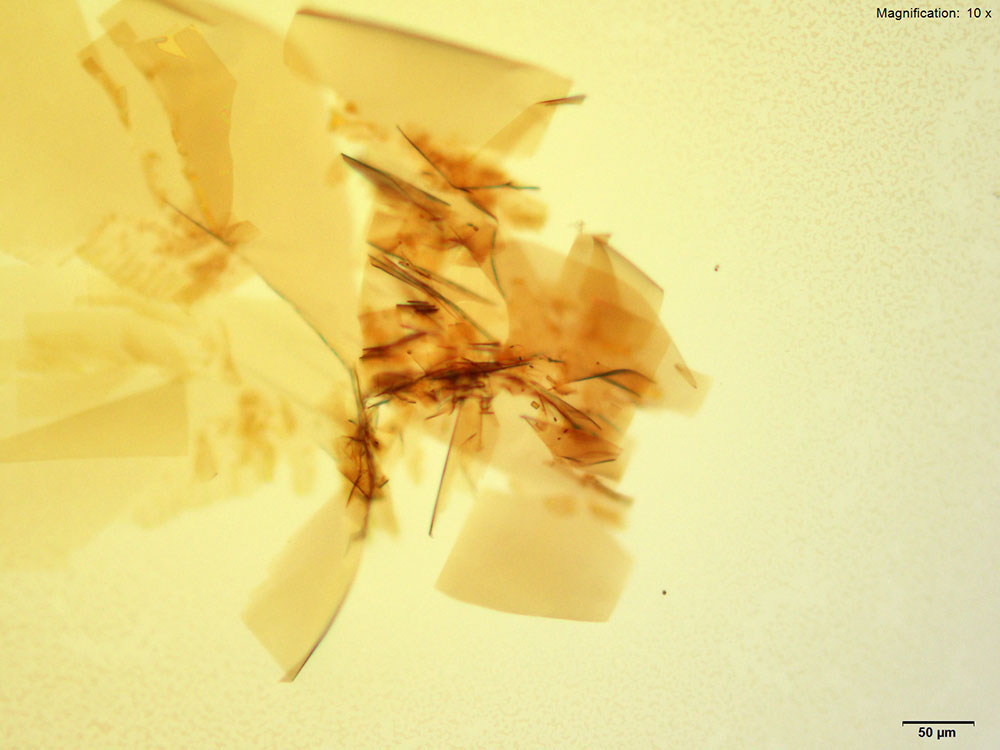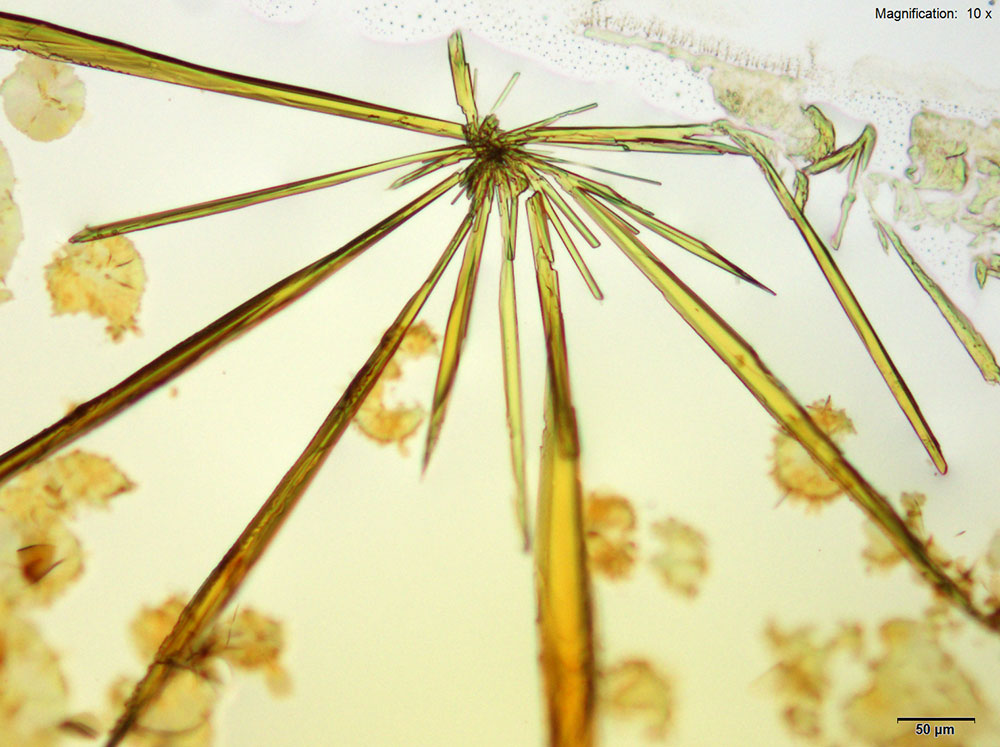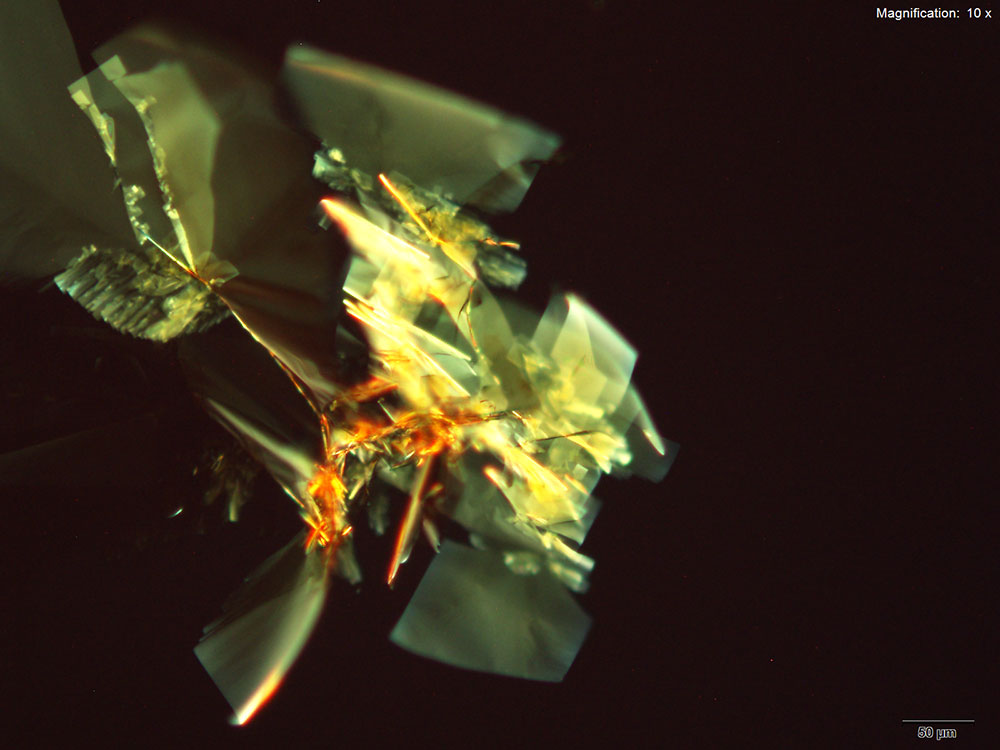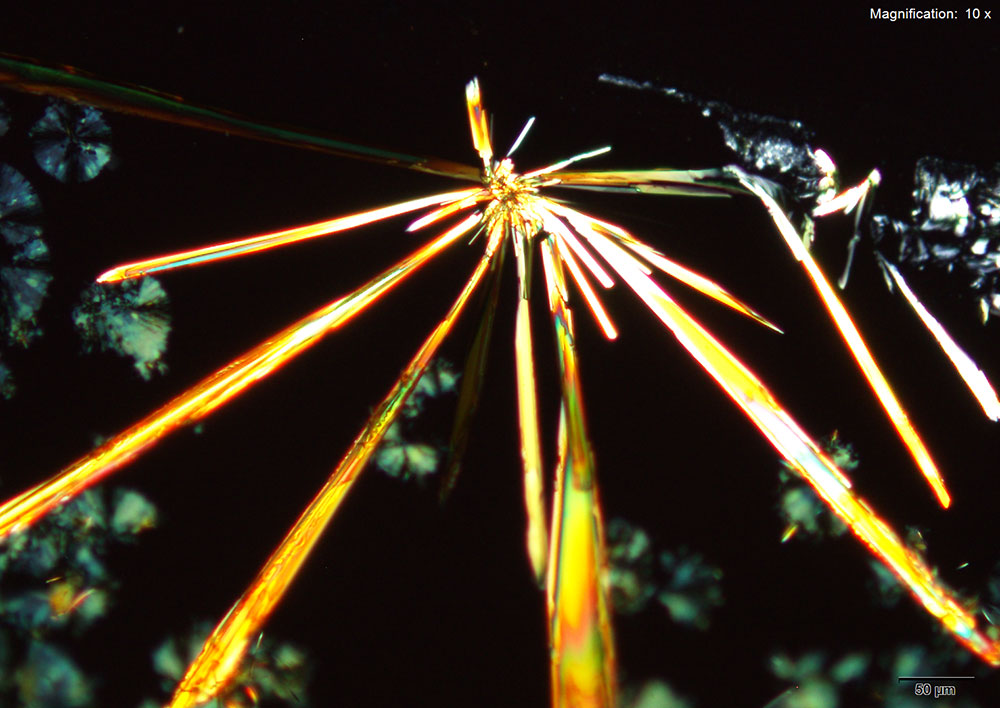3-Methylbuphedrone

5% Aqueous HAuCl4
3-methylbuphedrone dissolved in water, 10% hydrochloric acid or 10% acetic acid, gives yellow rectangular tablets. The tablets when grown quickly may grow smaller and longer to appear as blades stacked on each other. Both forms appear very bright under crossed polars.
5% HAuCl4 in 1:2 concentrated H2SO4: H20
Two forms of crystals are observed with the acidic gold chloride reagent. The hexagonal plates are more prominent and grow as large stacks. They appear bright white or bluish white under crossed polars. Flat thin blades that appear as needles when oriented on their sides are also observed. These are brightly colored under crossed polars.
The hexagonal plates can be used for IR spectroscopy.
IR Spectrum - 5% HAuCl4 in 1:2 concentrated H2SO4: H20
Gold Bromide (HAuBr4)
Flat orange square or rectangular plates are readily formed with gold bromide reagent. The thin plates are arranged in various orientations and appear bright orange in crossed polars.
Platinic Bromide (H2PtBr6)
The first change seen when platinic bromide reagent is mixed with an aqueous solution of 3-Methylbuphedrone is the formation of thin floating skin. The skin is a bright greenish yellow undercrossed polars. Formed along with the skin are long blades that may be arranged individually or in clusters.


